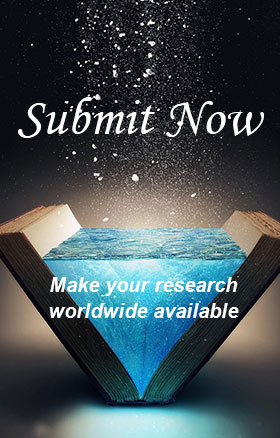Developing Encyclopaedia Media on Form and Function of Plant to Train Elementary Students' Critical Thinking Skill
Abstract
This study aims to develop effective, feasible, and valid encyclopedia media on form and function of plant to train fourth-graders’ critical thinking skills in the elementary school. This study was research and development based on Borg and Gall theory and Research (R& D) model. Data were collected using observation, questionnaires, and tests and analyzed using media validity and reliability, student activity, implementation of lesson plans, and tests of critical thinking skills. After that, the media was validated by experts. The results of the expert validation showed that the Encyclopedia media was valid for use. Furthermore, the media was tested on fourth-graders of SDN KERTAJAYA V / 211 Surabaya using One Group Pretest-Posttest Design. The limited scale trial results showed (1) the validation of the developed Encyclopedia media were 96% valid categories, (2) the developed media were tested in term of lesson plan implementation were 94% with well-implemented category and student activities were suitable to Discovery Learning model, (3) the effectiveness of the Encyclopedia media in terms of students’ critical thinking skills tests showed that average N-Gain was 0.75 (high) and positive response of 97% was given by students. Therefore, it can be concluded that the Encyclopedia media on Form and Function of Plant is feasible to train Critical Thinking Skills of Elementary School Students.
Keywords
Full Text:
PDFReferences
Ahmatika, Deti. (2016). Peningkatan Kemampuan Berpikir Kritis siswa dengan Pendekatan Inquiry/Discovery. Bandung: Jurnal Euclid, ISSN 2355-1712, Vol 3 No. 1 p. 394.
Arikunto, S. (2010). Prosedur Penelitian Suatu Pendekatan Praktik. Jakarta: Rineka Cipta.
Borich. (1994). Observation Skills for EffectiveTeaching. New York: Merril Publishing Company.
Deti, A. (2019). Peningkatan Kemampuan Berpikir Kritis Siswa dengan Pendekatan Inquiry/Discovery. Bandung: Jurnal Euclid, Vol 3, No. 1, p.394.
Firdha Bella, d. (2019). The Development of Plant Encyclopedia Based on Database in Adiwiyata Senior High School. Semarang: Jurnal of Biology Eucation 8(1) (2009): 1-7.
Hake, R. (1999). Analyzing Change/Gain Score. AREA-D America Education Research Association's Devision. D, Measurement and Reasearch Methodology. AMERICAN.
Hafrah, M. &. (2015). Pengaruh model Pembelajaran Discovery Learning terhadap Kemampuan Berpikir Kritis Ditinjau dari Gaya Belajar Peserta Didik Kelas XI IPA SMAN 4 Bantaeng. Makasar.
Huda, C., Damayanti, F., & Nuvitalia, D. (2019). Analisis Validasi dan Reliabilitas Alat Peraga Tabung Resonansi Horizontal beserta Instrumennya untuk Menunjang Keterampilan Generik Sains Siswa. Physics Education Research Journal Vol. 1 No. 1 (2019), 1-10. P-ISSN: 2685-6190.
Hidayati, R. (2016). Layanan penguasaan Konten dengan Media Ular Tangga untuk Meningkatkan Keterampilan Berpikir Kritis Siswa Sekolah Dasar. Kudus: Jurnal Konseling GUSJIGANG Vol. 2 No. 1 Print ISSN 2460-1187.
Ibrahim, M. (2005). Asesmen Berkelanjutan "Konsep dasar, tahapan pengembangan dan contoh". Surabaya: Unesa University Press.
Iskandar, Budijanto & Amirudin. (2016). Pengembangan Buku Teks Geografi dengan Struktur Penulisan Ensiklopedia. Malang: Jurnal Pendidikan Teori, Penelitian dan Pengembangan Vol 1 No. 2 hal 137-143.
Jodian, d. (2019). The Correlation Between Critical and Creative Thinking Skills on Cognitive Learning Results. Jambi: Eurasian Journal of Educational Research 81 (2019) 99-114.
Munadi, Y. (2013). Media Pembelajaran . Jakarta: Referensi (GP Press Group).
Mustaji. (2013). Media Pembelajaran . Surabaya: Unesa University Press.
Pebriana, R. (2017). Effeect of Problem Based Learning to Critical Thinking Skills Elementary School Students in Sosial Studies. Bandung: Journal of Elementary Education Vol. 1, No 1. p. 109-118.
Prihartanta, W. (2015). Ensiklopedia Umum. Banda Aceh: Jurnal Adabiya, Vol 5 No.85.
Riduwan. (2010). Konversi Dasar-Dasar Statistik. Bandung: Alfabeta.
Setyosari, P. (2010). Metode Penelitian Pendidikan dan Pengembangan. Jakarta: Kencana Prenada Media Group.
Shahzada, S. a. (2017). Role Play: A Productive Teaching Strategy to Promote Critical Thinking. Township Lahore: Bulletin of Education and Research.
Siti Imma, Y. (2019). Pengembangan Modul Tematik Integratif Berbasis Character Building. Malang: Jurnal Bidang Pendidikan Dasar (JBPD), Vol.3 No. 1.
Sugiyono. (2013). Metode Penelitian Kuantitatif, Kualitatif dan R&D. Bandung: Alfabeta.
Supriatin, D. (2018). Use Of Digital Encyclopedia Media To Develop Cognitive Aspects Of. Cimahi: Jurnal Emprowerment, 7(2), 81-87.
Trisnawati, R. N. (2018). Pengaruh Pembelajaran IPA Berbasis Empat Pilar Pendidikan terhadap Kemampuan Berpikir Kritis. Indonesia: JIPVA (Jurnal Pendidikan IPA Veteran) Vol.2 nomer 2, P. 162-173.
Zubaidah, S. (2010). Berpikir Kritis: Kemampuan Berpikir Tingkat Tinggi yang dapat Dikembangkan melalui Pembelajaran Sains. Malang: https://www.researchgate.net/publication/318040409.
DOI: https://doi.org/10.29103/ijevs.v2i6.2514
 Article Metrics
Article Metrics
 Abstract Views : 421 times
Abstract Views : 421 times
Refbacks
- There are currently no refbacks.
Copyright (c) 2020 Yeny Erawati, Raharjo, and Utiya Azizah





















 International Journal for Educational and Vocational Studies (IJEVS)
International Journal for Educational and Vocational Studies (IJEVS)